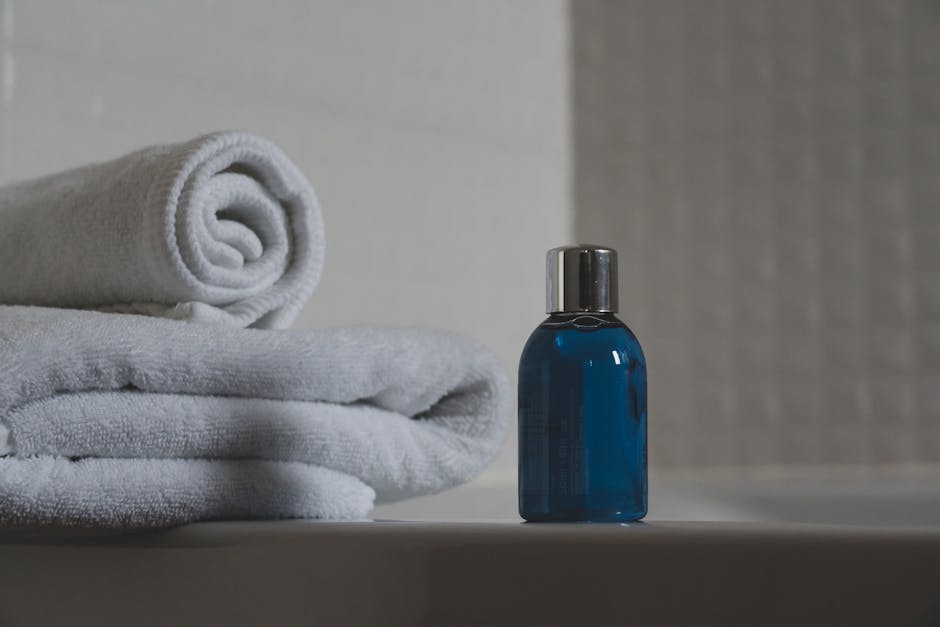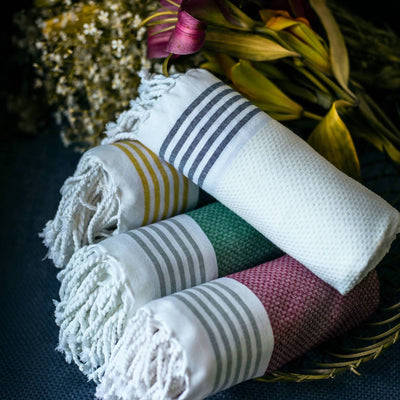Sidebar
Popular products
Resent Release
-

What Ingredients Make Luxury Skincare Stand Out?
August 14, 2024
-

Why Should You Choose Sustainable Bath Accessories?
August 07, 2024
-

The Future of Home Decor: Integrating Quality Textiles for a Luxurious and Eco-Friendly Home

Share
Introduction to quality textiles in home decor
Quality textiles can make a significant difference in your home decor. Not only do they add a touch of luxury, but they can also contribute to a more eco-friendly living space. By choosing high-quality, sustainable fabrics, you can enhance the overall aesthetic of your home while reducing your environmental impact.

Benefits of integrating quality textiles in home decor
Quality textiles bring a touch of luxury and comfort to your home decor. They provide a sense of warmth and style to your living space, creating an inviting environment for you and your guests. In addition, using high-quality textiles promotes an eco-friendly approach to home decor, as they are often made from sustainable and natural materials. Natural fibers such as cotton, linen, and wool not only offer durability and longevity but also contribute to a healthier indoor environment. By integrating quality textiles into your home decor, you can achieve a luxurious and environmentally conscious living space.
Sustainable and eco-friendly aspects of quality textiles
When it comes to sustainable and eco-friendly home decor, quality textiles play a crucial role. By choosing textiles made from organic and natural fibers, you can reduce your environmental footprint while creating a luxurious and comfortable living space.
- Organic and natural textiles, such as organic cotton, linen, and hemp, are free from harmful chemicals and pesticides, making them a safer and more sustainable choice for your home.
- These textiles are also biodegradable, meaning they have minimal impact on the environment when disposed of, unlike synthetic materials that contribute to pollution and waste.
- Investing in quality textiles made from sustainable materials not only promotes eco-friendly practices but also ensures that your home decor is durable and long-lasting, reducing the need for frequent replacements.
By integrating sustainable textiles into your home decor, you can create a luxurious and eco-friendly living environment that reflects your commitment to a more sustainable future.
Different types of quality textiles for home decor
When it comes to quality textiles for home decor, there are a variety of options to choose from. Here are a few types you might want to consider:
- Cotton: Known for its softness, breathability, and durability, cotton is a popular choice for bedding, curtains, and upholstery.
- Linen: This natural fiber is valued for its ability to stay cool in hot weather and its elegant, textured look. Linen is often used for tablecloths, napkins, and curtains.
- Silk: Regarded as a luxurious and high-quality material, silk is often used for decorative pillows, draperies, and delicate upholstery.
- Wool: Ideal for adding warmth and texture to a space, wool is frequently used for rugs, throws, and blankets.
Remember, when choosing textiles for your home, it’s essential to consider both the aesthetic appeal and the environmental impact of the materials you select.
Choosing the right quality textiles for your home
When choosing textiles for your home, it's important to consider both quality and eco-friendliness. Look for textiles made from natural materials like organic cotton, linen, or bamboo, as these are not only luxurious but also environmentally friendly. Additionally, consider textiles with certifications like GOTS or OEKO-TEX to ensure they meet high quality and safety standards. Keep in mind that high-quality textiles may initially cost more, but they will last longer and be better for the environment in the long run.
Incorporating luxury with quality textiles
When incorporating luxury with quality textiles in home decor, it's essential to consider the environmental impact and longevity of the materials. Here are some key points to keep in mind:
- Quality textiles, such as organic cotton, linen, and silk, can elevate the luxury feel of your home while being eco-friendly.
- Investing in high-quality textiles may initially cost more, but they can last longer and contribute to a more sustainable lifestyle.
- Look for textiles with certifications such as GOTS (Global Organic Textile Standard) to ensure they meet environmentally friendly and ethical standards.
- Consider incorporating natural, luxurious materials like alpaca wool or cashmere for added comfort and elegance in your home.
- By prioritizing the use of quality, sustainable textiles, you can create a luxurious and eco-friendly living space that embodies both comfort and style.
Maintenance and care of quality textiles
Quality textiles require special care to maintain their luxurious feel and eco-friendly properties. Here are key tips to ensure your textiles last longer and stay beautiful:
- Proper Cleaning: Follow the manufacturer's instructions for washing and cleaning your textiles. Use gentle, eco-friendly detergents to avoid damaging the fabric.
- Storage: Store your textiles in a cool, dry place to prevent moisture and mildew. Fold them neatly or roll them to avoid creases and wrinkles.
- Protection from Sunlight: Direct sunlight can fade textiles over time. Use curtains or blinds to protect them from prolonged exposure to sunlight.
- Regular Maintenance: Brush or vacuum your textiles regularly to remove dust and debris. This helps maintain their quality and appearance.
By following these tips, you can enjoy your quality textiles in your home for a long time while reducing the environmental impact.
Design trends in quality textiles for home decor
Quality textiles are becoming increasingly popular in home decor, with a rising focus on luxury and eco-friendly materials. Some of the design trends in quality textiles for home decor include:
- Natural, sustainable fabrics such as organic cotton, linen, and bamboo
- Textiles with unique textures and patterns, adding depth and visual interest to the decor
- High-quality, durable fabrics that are both stylish and environmentally friendly
- Innovative blends of natural and synthetic fibers for improved performance and sustainability.
Where to find quality textiles for home decor
When searching for quality textiles for your home decor, consider looking at local artisan markets or boutique shops that specialize in handcrafted textiles. You can also explore online platforms that feature unique and sustainable textiles, such as Etsy or Fair Trade certified websites. Another option is to seek out eco-friendly textile companies that prioritize sustainability and ethical production practices. By doing so, you can integrate luxurious and environmentally-friendly textiles into your home decor, creating a thoughtful and stylish living environment.
Conclusion and the future of quality textiles in home decor
As we conclude, it is evident that the future of home decor lies in integrating quality textiles for a luxurious and eco-friendly home. With a growing focus on sustainability, natural and organic fabrics such as cotton, linen, and bamboo are gaining popularity in home decor. These textiles not only offer a luxurious look and feel but also contribute to a healthier environment. Additionally, advancements in technology and sustainable manufacturing processes are expected to further enhance the quality and variety of textiles available for home decor. As we move forward, we can anticipate a continued shift towards eco-conscious, premium textiles that elevate the aesthetic appeal of our living spaces while embracing sustainability.





